
Journal of Language Evolution
Scope & Guideline
Connecting Minds Through the Evolution of Language
Introduction
Aims and Scopes
- Interdisciplinary Research on Language Evolution:
The journal encompasses a wide range of disciplines, including linguistics, cognitive science, anthropology, and evolutionary biology, to investigate the origins and development of language. - Empirical Studies on Communication Systems:
It publishes empirical research examining both human and non-human communication systems, contributing to our understanding of vocal learning, gestures, and other forms of expression. - Methodological Innovations:
The journal encourages innovative methodologies, such as Bayesian phylogenetic analysis and artificial language experiments, to explore linguistic phenomena and their evolutionary implications. - Cultural and Cognitive Influences:
Research that examines the impact of cultural transmission, social dynamics, and cognitive processes on language structure and use is a core focus. - Comparative Analyses across Species:
Comparative studies between human languages and animal communication systems are central, shedding light on the evolutionary pathways that have shaped language.
Trending and Emerging
- Bayesian and Phylogenetic Methods:
There is a notable increase in the use of Bayesian and phylogenetic methods to analyze linguistic data, providing robust frameworks for understanding language evolution and relationships among languages. - Exploration of Non-Human Communication:
Research focusing on vocal learning and communication systems in non-human species, particularly in primates and songbirds, has gained traction, revealing insights into the evolutionary roots of human language. - Cultural Transmission and Language Games:
Studies investigating cultural transmission, including language games and their implications for language structure, are on the rise, highlighting the role of social interaction in language evolution. - Integration of Cognitive Science:
There is an emerging trend toward integrating cognitive science perspectives into linguistic studies, exploring how cognitive processes influence language learning and usage. - Artificial Language Experiments:
The use of artificial languages to study the emergence of linguistic structures and dependency patterns is increasingly popular, offering experimental insights into language formation processes.
Declining or Waning
- Traditional Linguistic Analysis:
There appears to be a waning interest in purely traditional linguistic analyses that do not incorporate evolutionary or cognitive perspectives, as the journal shifts towards more interdisciplinary approaches. - Static Models of Language Change:
Research that relies on static models to explain language change is decreasing, with a preference for dynamic, simulation-based methodologies that account for cultural evolution and interaction. - Descriptive Studies without Evolutionary Context:
Descriptive studies that lack an evolutionary context or fail to address the implications of findings for language evolution are becoming less common, as the journal emphasizes studies with broader relevance.
Similar Journals

Lege Artis-Language Yesterday Today Tomorrow
Fostering Interdisciplinary Insights into LanguageLege Artis: Language Yesterday Today Tomorrow is a pivotal open access journal dedicated to the dynamic and multifaceted study of language, linguistics, and communication in contemporary society. Published by the esteemed University of SS Cyril & Methodius in Trnava, Slovakia, this journal serves as a vital platform for scholars and practitioners to explore the evolution of language and its impact on culture and society. With an ISSN of 2453-8035, Lege Artis has embraced open access since 2016, ensuring that its valuable research findings are freely available to all, thus promoting wider dissemination and engagement within the academic community. The journal invites contributions that enrich the understanding of linguistic theory, historical linguistics, sociolinguistics, and applied linguistics, making it an essential resource for researchers, educators, and students alike. By fostering an interdisciplinary approach, Lege Artis aims to contribute significantly to our understanding of language as a living entity, continuously evolving and adapting to societal changes.

REVUE DE LINGUISTIQUE ROMANE
Celebrating the Legacy of Romance LanguagesREVUE DE LINGUISTIQUE ROMANE, published by the esteemed SOCIÉTÉ LINGUISTIQUE ROMANE, is a prominent academic journal dedicated to the exploration of Romance linguistics. With its ISSN 0035-1458, the journal plays a significant role in advancing knowledge within the fields of linguistics and the history and philosophy of science. Although it does not currently offer Open Access, it provides critical insights and peer-reviewed research that are indispensable for scholars, educators, and students interested in the nuances of Romance languages. The journal, which has seen converged coverage from 2006 to 2017, and then again from 2019 to 2021, is ranked in the third quartile (Q3) across various categories within Scopus, reflecting its established presence in the academic community. As a vital resource for interdisciplinary studies, REVUE DE LINGUISTIQUE ROMANE is instrumental for those seeking to deepen their understanding of linguistic structures, cultural nuances, and the historical development of Romance languages.
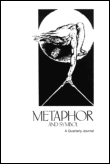
METAPHOR AND SYMBOL
Illuminating the Power of Metaphor and SymbolismMETAPHOR AND SYMBOL is a prestigious journal dedicated to advancing the study of metaphor, symbolism, and their roles in communication and cognition. Published by Routledge Journals, Taylor & Francis Ltd, this journal possesses an impressive reputation, evidenced by its Q1 rankings in both Communication and Linguistics and Language, as well as a Q3 ranking in Experimental and Cognitive Psychology. As of 2023, it holds a notable position in Scopus rankings, standing in the 86th percentile for Social Sciences in Linguistics and Language, making it a vital resource for researchers and professionals interested in the intricate interplay between language and thought. With its convergence years extending from 2007 to 2024, METAPHOR AND SYMBOL aims to publish innovative research that explores the cognitive, communicative, and social aspects of metaphor and symbolism, thereby enriching the academic discourse in its field. While this journal is not open access, its contributions are invaluable to advancing knowledge and understanding in communication, psychology, and linguistics, ensuring it remains an essential read for scholars and students alike.
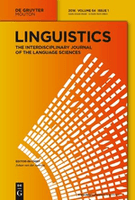
LINGUISTICS
Fostering Insightful Dialogues in Language StudiesLINGUISTICS, published by De Gruyter Mouton, stands as a leading journal in the field of linguistics, exemplifying innovation and scholarly rigor. With its roots tracing back to 1963 and a commitment to advancing linguistic research, this journal has consistently achieved Q1 status in both the Linguistics and Language category, marking it among the top-tier journals in the discipline. The journal is indexed with impressive rankings in Scopus, evidenced by its position within the 84th percentile in Language and Linguistics, and 83rd percentile in Social Sciences, demonstrating its significant influence and reach among scholars. Transitioning to Open Access since 2022, LINGUISTICS enhances accessibility and fosters a wider dissemination of knowledge. Published in Germany and backed by a reputable publisher, LINGUISTICS is dedicated to exploring diverse topics in linguistics, making it essential reading for researchers, professionals, and students aiming to stay at the forefront of linguistic scholarship.

Suvremena Lingvistika
Transforming Linguistic Knowledge into Accessible Insights.Suvremena Lingvistika is a distinguished open-access journal published by the Croatian Philological Society, dedicated to advancing research in the field of linguistics and language. Since its establishment, the journal has been pivotal in promoting scholarly dialogue within the linguistics community, especially among researchers and academics in Croatia and beyond. With an ISSN of 0586-0296 and an E-ISSN of 1847-117X, the journal has transitioned to an open-access model since 2007, ensuring that research is freely accessible to all. As of 2023, it holds a respectable Q3 ranking in the Linguistics and Language category, reflecting its potential contribution to the field. The journal's scope encompasses a wide array of linguistic disciplines, encouraging both theoretical and empirical studies. Supportive of new research, Suvremena Lingvistika aims to foster innovative approaches and methodologies in linguistics, making it an essential resource for students, researchers, and professionals eager to explore the complexities of language. With its ongoing publication until 2024, it continues to shape the linguistic landscape, providing valuable insights and fostering collaboration among scholars globally.
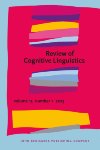
Review of Cognitive Linguistics
Disseminating Knowledge at the Forefront of Linguistic ResearchThe Review of Cognitive Linguistics, published by John Benjamins Publishing Co, is a premier academic journal dedicated to the exploration of cognitive approaches to linguistics. With an ISSN of 1877-9751 and E-ISSN 1877-976X, this journal provides a critical platform for researchers and professionals to disseminate their findings in the rapidly evolving fields of linguistics and language, alongside developmental and educational psychology. Hailing from the Netherlands, the journal boasts impressive standing within the academic community, as indicated by its 2023 Q1 ranking in Linguistics and Language and Q3 in Developmental and Educational Psychology. Additionally, its Scopus rankings reflect a strong position within the arts and humanities and social sciences categories. While currently operating under a traditional access model, this journal actively contributes to the overarching discourse within cognitive linguistics, and is a vital resource for those aiming to deepen their understanding of the intricate link between language and cognition. Researchers, educators, and students are encouraged to engage with the rich body of articles spanning its convergence years from 2010 to 2024, making it an essential read for those at the forefront of these interdisciplinary studies.
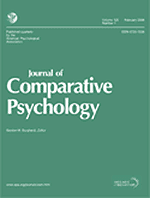
JOURNAL OF COMPARATIVE PSYCHOLOGY
Championing Rigorous Research in Behavioral ScienceJOURNAL OF COMPARATIVE PSYCHOLOGY is a prestigious academic journal published by the American Psychological Association, dedicated to advancing the understanding of behavioral processes across diverse species. With its ISSN 0735-7036 and E-ISSN 1939-2087, the journal has been a cornerstone of comparative psychology research since its inception in 1983. It primarily caters to the fields of ecology, evolution, and behavior, ranking impressively in the Q2 quartile in the category of Ecology, Evolution, Behavior and Systematics, and Q3 in the miscellaneous Psychology category as of 2023. This journal serves as a vital platform for disseminating high-quality research, addressing both fundamental questions and applied issues in systematic studies of behavior across species. Although not open access, its rich repository of research articles, meta-analyses, and reviews makes it an indispensable resource for researchers, practitioners, and students striving to deepen their knowledge and foster innovation in comparative psychological studies. With a commitment to rigorous peer review and scholarly excellence, the JOURNAL OF COMPARATIVE PSYCHOLOGY is a key player in shaping the discourse within its field and driving future research.

Journal of Cognitive Science
Exploring the Frontiers of Human ThoughtThe Journal of Cognitive Science, with ISSN 1598-2327, is a distinguished publication from SEOUL NATL UNIV, INST COGNITIVE SCIENCE, focusing on the multidisciplinary field of cognitive science. Established in 2016, this journal aims to advance knowledge in various domains, including Artificial Intelligence, Cognitive Neuroscience, and Experimental Psychology, while also delving into Linguistics and Language. Although currently categorized in Q4 for several subjects in the 2023 rankings, it presents an invaluable platform for innovative research and scholarly discourse, providing insights that connect cognitive processes with practical applications, thus fostering cross-disciplinary collaboration. Located in South Korea, the journal adheres to rigorous academic standards, inviting submissions that contribute significantly to understanding cognition in a digital age. While it does not offer Open Access, readers can access articles through university libraries and academic databases, engaging with the latest findings and theories that shape the future of cognitive science.
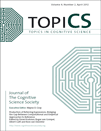
Topics in Cognitive Science
Exploring the Intersection of Mind and TechnologyTopics in Cognitive Science, published by WILEY, is a premier interdisciplinary journal that advances the understanding of the cognitive processes that underpin human behavior and interaction with technology. With a commendable impact factor and a strong focus on research from 2009 to 2024, this journal garners significant attention in various subfields, as evidenced by its Q1 ranking in Experimental and Cognitive Psychology and Linguistics and Language, alongside a Q2 position in Artificial Intelligence, Cognitive Neuroscience, and Human-Computer Interaction. Researchers and professionals will find invaluable insights into the latest experimental findings, theoretical discussions, and practical applications that bridge cognitive neuroscience, psychology, and computer science. Topics in Cognitive Science is especially pivotal for those aiming to delve deeper into cognitive mechanisms and their implications within our increasingly digital world, making it an essential resource for students and scholars alike.
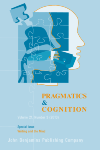
Pragmatics & Cognition
Advancing Understanding of Contextual CommunicationPragmatics & Cognition, published by John Benjamins Publishing Co, is an esteemed journal that serves as a cross-disciplinary platform for the study of language, cognition, and context-dependent communication. With its ISSN 0929-0907 and E-ISSN 1569-9943, the journal has established a notable reputation since its inception in 1993, although its coverage spans various fields from behavioral neuroscience to linguistics and philosophy. Recognized for its scholarly contributions, it holds impressive Scopus rankings, significantly within Linguistics and Language, where it ranks in the 63rd percentile among peers. Although it currently maintains a Q4 designation in Behavioral Neuroscience and a Q1 in Linguistics and Language as of 2023, the journal appeals to a diverse audience addressing the intricate relationships between language use and cognitive processes. As researchers and academics navigate this evolving landscape, Pragmatics & Cognition remains pivotal in fostering essential dialogues and advancing knowledge in the interdisciplinary field, providing rich content that is both insightful and relevant.